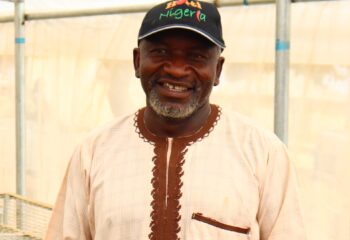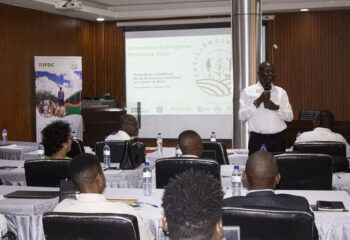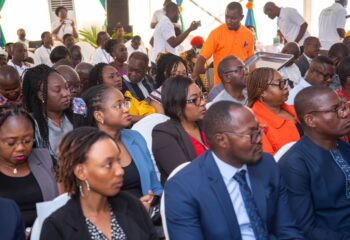August 31, 2011 – DHAKA, Bangladesh, and MUSCLE SHOALS, Ala., United States – IFDC has released the video “An Innovative Trail for Rice Production” to highlight the impact of the Improved Livelihood for Sidr-Affected Rice Farmers (ILSAFARM) project in Bangladesh. The video includes inspiring profiles of Bangladeshis whose lives have significantly improved as a result of the project.
In late 2007 Cyclone Sidr ravaged Bangladesh, killing thousands and destroying almost 660,000 hectares (ha) of crops that were nearing harvest.
In Sidr’s wake, the ILSAFARM project was launched in 2008 to help Bangladeshis recover from the devastation. The project was funded by the U.S. Agency for International Development (USAID) and implemented by IFDC in collaboration with the Bangladesh Department of Agricultural Extension (DAE).
ILSAFARM’s focus was to restore rice paddy production by expanding urea deep placement (UDP) technology to the country’s eight most affected districts. UDP is the insertion of large urea briquettes (known as Guti urea in Bangladesh) into the paddy root zone after transplanting.
When urea is traditionally spread into floodwaters to fertilize paddy plants, about two-thirds of this nitrogen fertilizer is lost as greenhouse gas or becomes a groundwater pollutant. UDP is a more efficient and environmentally responsible method of fertilization. UDP reduces urea fertilizer use by 35 percent because more of the nitrogen stays in the soil, close to the plant roots where it is absorbed more effectively. UDP increases crop yields by 20 percent, which results in increased income for farmers. In addition, the farmers use less fertilizer, which saves them money.
Nearly 200,000 farmers and DAE agriculture officers received training through ILSAFARM; 13 percent were women. Small entrepreneurs were trained to operate machines that manufacture briquettes. Moreover, through a cost-share agreement, they were able to buy a briquette machine for 20 percent of the cost.
By the end of the project in 2010, more than 500,000 farmers had adopted Guti urea technology. Their net household income increased by an average of $185 per year. With Bangladesh’s average per capita annual income around $520, this increase is substantial.
Shova Rani Dash’s story of achieving food security for her family is highlighted in the video. “As we have gotten more yields, we have renovated our house and bought cows,” said Dash, a farmer in Pirojpur district. “The children are now going to school. We have a new life.”
###
IFDC Contacts:
Ishrat Jahan
ijahan@ifdc.org
(880) 2 881-7617
Courtney Greene
cgreene@ifdc.org
+1 256-381-6600 ext. 357



